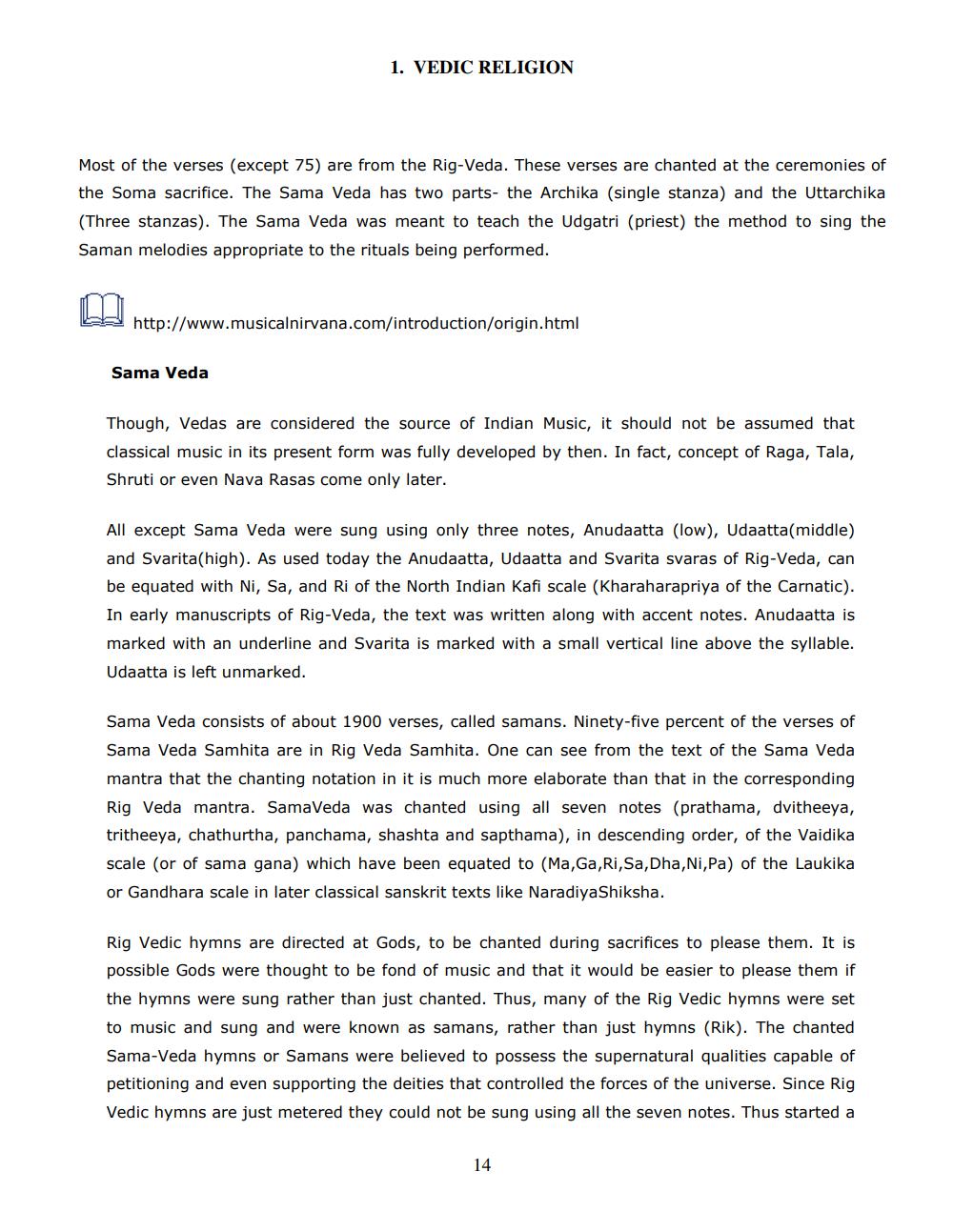________________
1. VEDIC RELIGION
Most of the verses (except 75) are from the Rig-Veda. These verses are chanted at the ceremonies of the Soma sacrifice. The Sama Veda has two parts- the Archika (single stanza) and the Uttarchika (Three stanzas). The Sama Veda was meant to teach the Udgatri (priest) the method to sing the Saman melodies appropriate to the rituals being performed.
http://www.musicalnirvana.com/introduction/origin.html
Sama Veda
Though, Vedas are considered the source of Indian Music, it should not be assumed that classical music in its present form was fully developed by then. In fact, concept of Raga, Tala, Shruti or even Nava Rasas come only later.
All except Sama Veda were sung using only three notes, Anudaatta (low), Udaatta(middle) and Svarita (high). As used today the Anudaatta, Udaatta and Svarita svaras of Rig-Veda, can be equated with Ni, Sa, and Ri of the North Indian Kafi scale (Kharaharapriya of the Carnatic). In early manuscripts of Rig-Veda, the text was written along with accent notes. Anudaatta is marked with an underline and Svarita is marked with a small vertical line above the syllable. Udaatta is left unmarked.
Sama Veda consists of about 1900 verses, called samans. Ninety-five percent of the verses of Sama Veda Samhita are in Rig Veda Samhita. One can see from the text of the Sama Veda mantra that the chanting notation in it is much more elaborate than that in the corresponding Rig Veda mantra. SamaVeda was chanted using all seven notes (prathama, dvitheeya, tritheeya, chathurtha, panchama, shashta and sapthama), in descending order, of the Vaidika scale (or of sama gana) which have been equated to (Ma,Ga, Ri, Sa, Dha, Ni,Pa) of the Laukika or Gandhara scale in later classical sanskrit texts like NaradiyaShiksha.
Rig Vedic hymns are directed at Gods, to be chanted during sacrifices to please them. It is possible Gods were thought to be fond of music and that it would be easier to please them if the hymns were sung rather than just chanted. Thus, many of the Rig Vedic hymns were set to music and sung and were known as samans, rather than just hymns (Rik). The chanted Sama-Veda hymns or Samans were believed to possess the supernatural qualities capable of petitioning and even supporting the deities that controlled the forces of the universe. Since Rig Vedic hymns are just metered they could not be sung using all the seven notes. Thus started a
14




